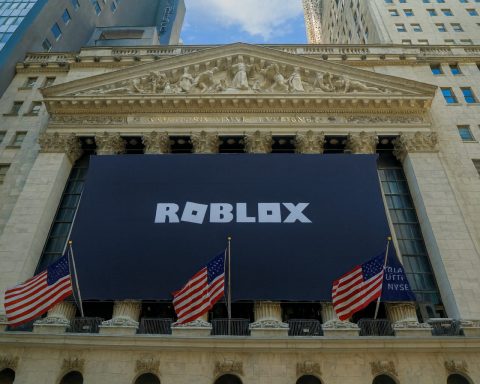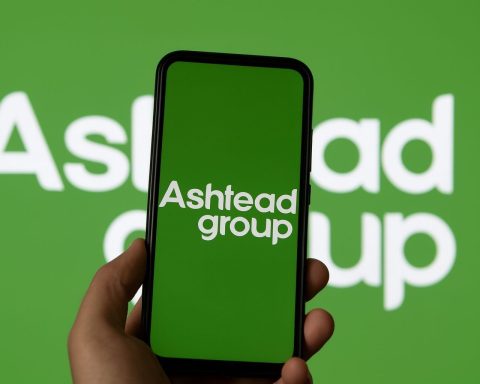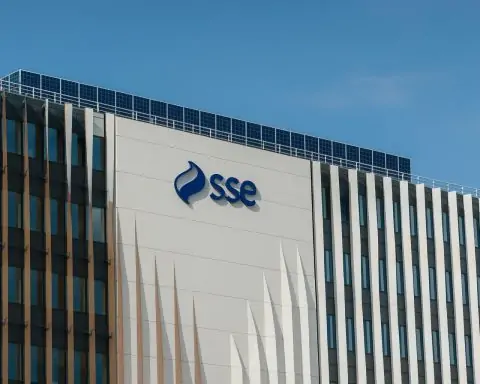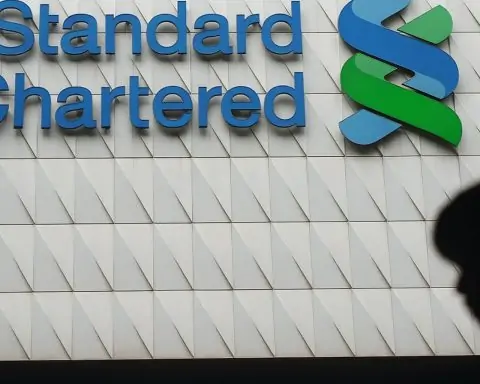- The Trump administration on Oct. 30, 2025 issued a final rule tightening the Public Service Loan Forgiveness (PSLF) program. The new rule excludes employers engaged in “illegal activities” (e.g. supporting terrorism or illegal immigration) [1]. Under this policy, fewer than 10 employers per year will lose eligibility, says Education Dept. Undersecretary Nicholas Kent, emphasizing that “taxpayer funds should never…subsidize organizations that violate the law” [2]. Critics warn the change “weaponizes” forgiveness and may face immediate legal challenges [3] [4].
- A separate development came from a court-supervised settlement on Oct. 17, 2025 between the Trump administration and the teachers’ union (AFT). Under the deal the Education Dept. must resume canceling debts for roughly 2–2.5 million borrowers in income-driven repayment (IDR) programs (such as ICR, PAYE and PSLF) who have made the required 20–25 years of payments [5] [6]. Notices began going out in early October 2025 (“You are now eligible…to have your loans discharged”) with an Oct. 21 opt-out deadline [7]. Crucially, any debt forgiven in 2025 under this deal is tax-exempt by law, and borrowers “won’t ever get taxed on that relief” [8] [9]. AFT President Randi Weingarten called it “a tremendous win for borrowers” after months of delays [10] [11].
- Separate reports (via Reuters and Politico) say Trump officials have considered selling portions of the U.S. government’s $1.6 trillion student loan portfolio to private investors [12]. This would be unprecedented – experts warn it could “eliminate the government’s power to cancel” loans [13]. Critics say such a sale would advance the administration’s deregulatory agenda (one watchdog noted, “when Wall Street’s demands run against the needs of working people, the banks get what they want” [14]).
- Market impact: Education-sector stocks have sagged under new loan caps and uncertainty. For example, the SPDR Education ETF (EDUC) is down ~12% this year and Strayer Education (NASDAQ: STRA) has plunged >18% [15]. By contrast, fintech lenders have soared: SoFi Technologies (NASDAQ: SOFI) is near $27–28 (up ~230% YTD [16]) and Upstart (NASDAQ: UPST) trades in the mid-$40s [17]. Nelnet (NYSE: NNI), a loan servicer, closed at ~$128 on Oct. 30 [18], and Navient (NASDAQ: NAVI) at ~$12 [19]. Analysts say much of this rally already “reflects good news” for private lenders [20].
- Expert commentary: Government officials emphasize the changes protect taxpayers, while critics accuse the administration of ideological micromanagement. As Kent explains, PSLF was “meant to support Americans…not to subsidize organizations that violate the law” [21]. ProtectBorrowers’ Mike Pierce calls the PSLF overhaul a bid to “weaponize” loan forgiveness as a cultural cudgel [22]. Economist and policy experts note the settlement simply enforces existing law: the Cato Institute says it “honors existing statutory repayment plans” and is not a new forgiveness initiative [23]. Fintech executives are optimistic: SoFi’s CEO Anthony Noto said the company will “absolutely capture” new lending opportunities if federal aid contracts [24]. Analysts at KBW predict that loan caps “will force many [students] to look to private lenders” [25]. Meanwhile, Moody’s Ratings has downgraded the higher-ed sector outlook to negative, warning that Trump’s policies have already “upended” the industry’s forecasts [26].
Public Service Loan Forgiveness Overhaul
On Oct. 30, 2025 the Dept. of Education finalized a sweeping change to the PSLF program. Citing President Trump’s March 2025 executive order on PSLF, the final rule narrows the definition of a “public service employer” to exclude organizations with a “substantial illegal purpose” [27]. That includes entities convicted of aiding illegal immigration, supporting terrorism, providing gender‑affirming care to minors (“prohibited medical procedures”), etc. In announcing the rule, Undersecretary Kent argued that “taxpayer funds should never directly or indirectly subsidize illegal activity” and that PSLF must be refocused on “our Nation’s teachers, first responders, and civil servants” [28].
Critics immediately condemned the rule as a partisan power play. Student‐loan advocates and nonprofits say it opens the door to ideological discrimination. Rep. Bobby Scott (D-VA) warned that under the new policy “if you’re on the Trump side of the partisan political agenda…you get loan forgiveness; if you’re on the other side…you don’t” [29]. The National Council of Nonprofits declared the rule “unlawful” and a “troubling precedent” since federal law previously treated all qualified nonprofits the same [30]. The American Academy of Family Physicians likewise said the overhaul undermines a “vital pathway” that allowed thousands of rural doctors to serve under PSLF [31]. Even a law professor who consulted on securities regulations quipped “we will see them in court” if this rule is challenged [32].
The administration argues that very few organizations will be disqualified. DOE officials estimate fewer than 10 employers per year would lose PSLF status under the new standard [33]. In response to criticisms, Sec. Ed Linda McMahon (a former Trump campaign ally) maintained the policy is about “terminating unlawful actions” and protecting taxpayers, not about politics [34] [35]. The rule goes into effect July 1, 2026 [36] [37], and lawsuits are expected almost immediately by major nonprofit and education groups.
Court Deal Resumes Debt Cancellations for Millions
Separately, a federal court deal forced the Education Dept. to restart loan forgiveness for millions of long‑time borrowers. In October 2025 the AFT teacher union and DOE filed a joint status report (AFT v. DOE) requiring immediate action on Income-Driven Repayment (IDR) programs. Under the agreement, DOE will process all pending forgiveness applications for borrowers who have already met their 20–25 year payment requirements in ICR, PAYE, IBR or PSLF plans [38]. Notices went out in early October declaring “You are now eligible to have some or all of your loans discharged” [39]. Borrowers have until Oct. 21, 2025 to opt out, after which the cancellations will be final.
Importantly, the deal ensures that any discharge occurring in 2025 will be treated as tax‑free under existing law. By statute, federal student loans cancelled on or before Dec. 31, 2025 are exempt from income tax. The settlement legally binds DOE to count the effective forgiveness date as 2025 (even if paperwork completes in 2026) [40]. “Borrowers won’t ever get taxed on that relief,” the AFT noted [41], a key point since the American Rescue Plan exemption expires end of 2025.
Union leaders hailed the outcome. AFT President Randi Weingarten called it “a tremendous win for borrowers”, restoring relief that had been “denied” under DOE’s prior inaction [42]. She said a “huge part of that affordability fight was vindicated” for people “stuck in limbo” by bureaucratic delays [43] [44]. Legal advocates at ProtectBorrowers.org similarly cheered that borrowers “won’t be unjustly hit with a tax bill once their student loans are finally canceled” [45].
Experts note the settlement merely enforces the law as written. The Cato Institute points out that the agreement “simply honors existing statutory repayment plans” and is “not a policy reversal” on forgiveness [46]. Indeed, this deal stems from a March 2025 court ruling that blocked parts of Biden’s SAVE plan, which had suspended some IDR terms. DOE had briefly halted all IDR processing until being sued by the AFT. The October settlement forces the agency to resume everything, including refunding any extra payments those borrowers made during the delay.
Federal Loan Portfolio Sale Plan
In early October 2025 news outlets reported that Trump administration officials quietly discussed selling slices of the U.S. government’s $1.6 trillion student loan portfolio to private investors [47]. This proposal – first disclosed by Politico and confirmed by Reuters – involves offloading the government’s highest-quality loans. Officials held meetings with industry executives about how to structure a sale while keeping consumer protections.
Analysts caution this could be destabilizing. Education advocates say such a sale would lock in a privatized debt market and strip the government of the ability to grant future forgiveness. One expert called it a “complex and unprecedented” scheme that could mean the Feds would no longer hold paper on many loans [48]. Daniel Zibel (National Student Loan Data System) noted the government could completely lose its cancellation power if debt is offloaded. ProtectBorrowers’ Michael Pierce warned that selling the loans aligns with an agenda “hell-bent on squeezing every last dollar out of families with student debt” [49]. Opponents also point out this sidesteps Congress (the portfolio was created by federal law) and raises legal questions about privacy and guarantees if private creditors take over.
The administration has not confirmed any decision. But the mere possibility sent ripples through the market: on Oct. 8 SoFi’s stock jumped ~6% amid the news [50]. Noto, SoFi’s CEO, commented that if the government steps back from student loans, his company will “absolutely capture that opportunity” [51]. JPMorgan and industry analysts are now closely watching for proposals in the FY2026 budget or next legislative package.
Market Impact and Stock Trends
Financial markets have moved in anticipation of these policy shifts. Education-related stocks and indices have largely weakened, while fintech and private lenders have rallied. For example, the SPDR S&P Education ETF (EDUC) has fallen roughly 12% in 2025 [52] amid tighter loan caps and enrollment worries. For-profit college shares plunged: Strayer Education (STR) is down over 18% YTD [53]. On the other hand, fintech lenders are booming. SoFi (SOFI) has more than tripled this year (trading in the high $20s) [54], and Upstart (UPST) trades in the mid‑$40s [55] (after a recent pullback). Both companies announced multibillion-dollar loan originations in Q3 2025 as they capitalize on the new demand.
Student loan servicers and lenders are mixed. Nelnet Inc. (NNI) closed at about $128 on Oct. 30, 2025 [56] (a gain of ~21% YTD). Navient Corp. (NAVI) was around $11.99 [57]. (Navient’s stock is off its late-2024 highs after divesting its federal servicing business, but 2025 has been calm.) Sallie Mae (SLM), the private-loan giant, remains near the mid-$20s per share (roughly flat in 2025). Unlike government-backed loans, these private lenders may benefit from loan limits, since more borrowers will turn to private alternatives.
Analysts note that much of the “good news” for fintech may already be priced in. One strategist observed that SoFi and Upstart’s run-up “reflects much of the good news already” [58]. At the same time, Moody’s downgrade of higher-ed suggests traditional college stocks could underperform. Moody’s warned in March that Trump’s policies were already causing colleges to freeze hiring and cut budgets [59], implying further pressure on tuition-driven businesses.
Expert Commentary
Economists and policy analysts are divided on the net effect. Here are some notable viewpoints:
- Nicholas Kent (U.S. Education Dept.): “Taxpayer funds should never directly or indirectly subsidize illegal activity… PSLF was meant to support Americans who dedicate their careers to public service – not to subsidize organizations that violate the law” [60]. He argues the rule simply refocuses PSLF on “teachers, first responders, and civil servants.”
- Michael Pierce (ProtectBorrowers.org): “The Trump Admin released a rule to weaponize Public Service Loan Forgiveness against public servants. Trump wants to use student debt as a cudgel, opening a new front in his culture war” [61]. Pierce views the policy as ideological, not fiscal.
- Randi Weingarten (AFT President): Praised the Oct. 17 deal, saying it “restores relief that had been denied” and is a “huge part of that affordability fight [that] was vindicated” [62]. She hailed it as “a tremendous win for borrowers.”
- Winston Berkman-Breen (ProtectBorrowers.org): Commented on taxes, noting borrowers “won’t be unjustly hit with a tax bill once their student loans are finally canceled” under the agreement [63].
- Anthony Noto (SoFi CEO): On private lending, Noto said if the government backs away, his firm “will absolutely capture that opportunity” by offering alternative loans [64].
- Tim Switzer (KBW analyst): Predicts that new federal caps “will force many [students] to look to private lenders,” boosting companies like SoFi and Upstart [65].
- Bill Townsend (CollegeRover.com): A financial adviser who warned that annulling Biden-era contracts (like the SAVE plan) could spark litigation. “Assuming SAVE… is voided, there will be the potential for a class action lawsuit against the U.S. government,” he said [66].
- Reilly Renwick (Pragmatic Mortgage Lending): Stressed borrower impact: ending the SAVE plan, for example, “could significantly affect [borrowers’] financial planning and repayment strategies” – especially low-income borrowers who would soon face “quite the financial strain” if reduced payment options are removed [67].
- Brian Galle (UC Berkeley law professor): After reading the PSLF rule, his “first reaction…was that we will see them in court” [68], predicting immediate litigation from higher-ed groups.
- Rep. Tim Walberg (R-MI, House Education Chair): Framed the PSLF change as cleaning up abuses, saying PSLF had been “forced taxpayers…to foot the bill for employees at radical organizations that violate state and federal laws” [69], arguing it restores the program’s intent.
- Moody’s Ratings: In a March report, Moody’s said Trump’s education policies have “upended” prior forecasts, causing institutions to pause investments and cut spending [70]. The agency downgraded higher-ed’s 2025 outlook to negative, citing “uncertainty over federal student aid” and pending cuts as major risks [71].
Forecast and Market Outlook
Looking ahead, analysts forecast divergent paths for education vs. fintech. Many expect continued pressure on traditional colleges and student lenders reliant on federal aid. Moody’s suggests universities may face enrollment declines and budget cuts under tighter federal rules [72]. For-profit college stocks are widely seen as overvalued and potentially heading lower; one market strategist even recommends shorting pure-play education companies given the outlook [73] [74]. By contrast, fintech and private lenders appear poised to benefit. The AInvest research team notes that fintech innovators (SoFi, Upstart, debt-management platforms) are “filling the federal void” with new loan alternatives and services [75] [76]. Investors are advised to overweight fintech stocks (e.g. SOFI, UPST) and ETFs like Global X FinTech [77].
Economists also point out that restoring loan payments (ending pandemic pauses) could eventually slow consumer spending (a known “recession risk” when debt payments resume). A recent Nasdaq article summarized experts’ 2025 forecasts under a Trump presidency, warning that ending income-driven plans (like SAVE) would likely increase monthly payments and spark legal challenges [78] [79]. If federal forgiveness programs stay limited or phased out (as the administration intends by 2028), many borrowers will have tighter budgets and seek private options. In that scenario, fintech lenders may keep rallying while education stocks languish.
Bottom line: The latest moves make the future of student debt uncertain. Millions of borrowers will see relief in 2025 thanks to the court-ordered deal [80] [81]. At the same time, PSLF is being rewritten, and the government’s role as lender is being questioned. Economists and market analysts are watching closely: some forecast that tighter rules and loan sales will reshape financing, potentially boosting fintech growth [82] [83], while others warn of new burdens on borrowers and institutions [84] [85]. The stock market’s response – bullish on lenders, bearish on schools – suggests investors believe much of the new policy impact is already baked in [86] [87]. Ahead, forecasts hinge on how rapidly Republicans push through loan-limit reforms and how courts rule on these changes. For now, borrowers and markets alike face a 2026 where student debt relief may be much more limited – but at least, for one year, taxed at zero.
Sources: Recent news and official releases from the U.S. Dept. of Education, Reuters, Newsweek, Fox Business, Inside Higher Ed, The Guardian, Ts2.tech summaries, and others [88] [89] [90] [91]. All data is current through Oct. 31, 2025.
References
1. www.ed.gov, 2. www.ed.gov, 3. www.newsweek.com, 4. www.insidehighered.com, 5. ts2.tech, 6. www.aft.org, 7. ts2.tech, 8. ts2.tech, 9. www.aft.org, 10. ts2.tech, 11. www.aft.org, 12. www.reuters.com, 13. www.theguardian.com, 14. www.theguardian.com, 15. ts2.tech, 16. ts2.tech, 17. stockanalysis.com, 18. www.nelnetinvestors.com, 19. www.marketscreener.com, 20. ts2.tech, 21. www.ed.gov, 22. www.newsweek.com, 23. www.cato.org, 24. longbridge.com, 25. longbridge.com, 26. www.insidehighered.com, 27. www.ed.gov, 28. www.ed.gov, 29. www.insidehighered.com, 30. www.insidehighered.com, 31. www.newsweek.com, 32. www.insidehighered.com, 33. www.insidehighered.com, 34. www.insidehighered.com, 35. www.insidehighered.com, 36. www.newsweek.com, 37. www.insidehighered.com, 38. www.aft.org, 39. ts2.tech, 40. ts2.tech, 41. ts2.tech, 42. ts2.tech, 43. www.aft.org, 44. ts2.tech, 45. www.aft.org, 46. www.cato.org, 47. www.reuters.com, 48. www.theguardian.com, 49. www.theguardian.com, 50. longbridge.com, 51. longbridge.com, 52. ts2.tech, 53. ts2.tech, 54. ts2.tech, 55. stockanalysis.com, 56. www.nelnetinvestors.com, 57. www.marketscreener.com, 58. ts2.tech, 59. www.insidehighered.com, 60. www.ed.gov, 61. www.newsweek.com, 62. www.aft.org, 63. www.aft.org, 64. longbridge.com, 65. longbridge.com, 66. www.nasdaq.com, 67. www.nasdaq.com, 68. www.insidehighered.com, 69. www.insidehighered.com, 70. www.insidehighered.com, 71. www.insidehighered.com, 72. www.insidehighered.com, 73. www.ainvest.com, 74. www.ainvest.com, 75. www.ainvest.com, 76. www.ainvest.com, 77. www.ainvest.com, 78. www.nasdaq.com, 79. www.nasdaq.com, 80. ts2.tech, 81. www.aft.org, 82. longbridge.com, 83. www.ainvest.com, 84. www.nasdaq.com, 85. www.insidehighered.com, 86. ts2.tech, 87. ts2.tech, 88. www.ed.gov, 89. ts2.tech, 90. www.reuters.com, 91. ts2.tech









